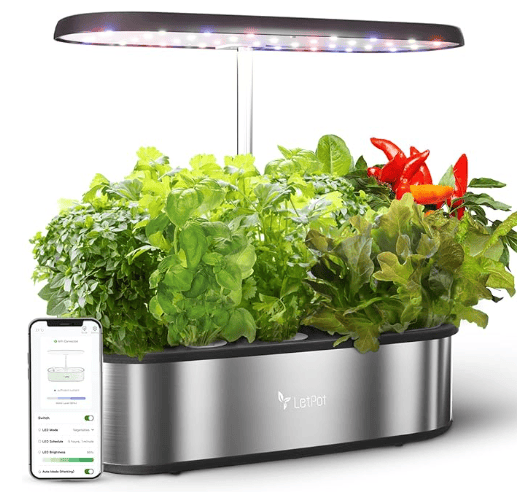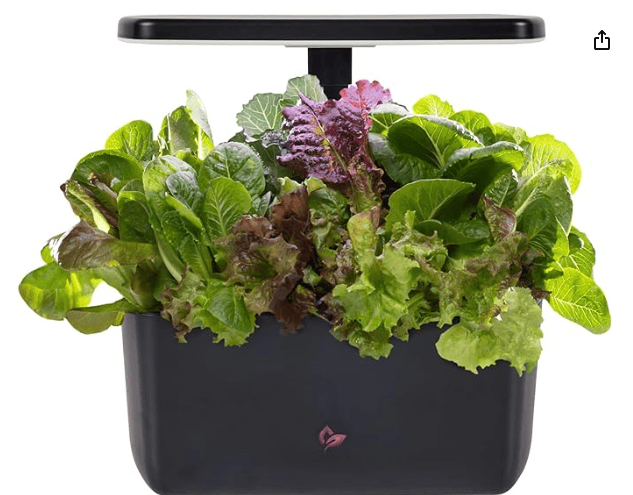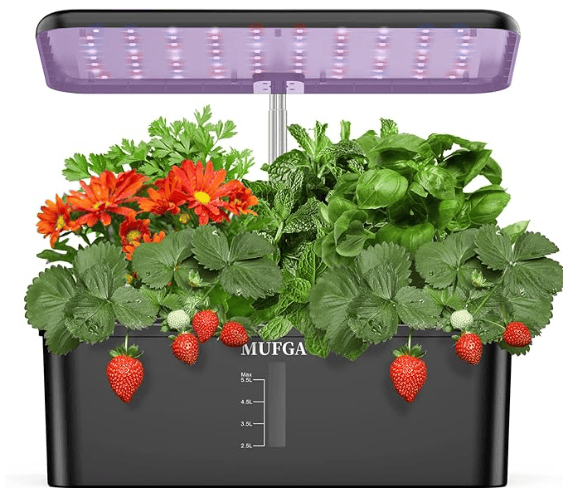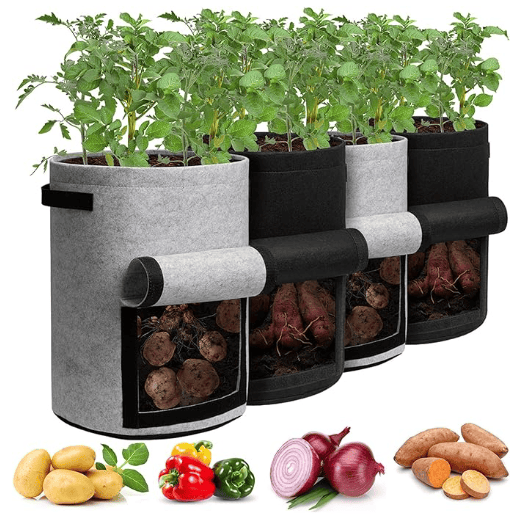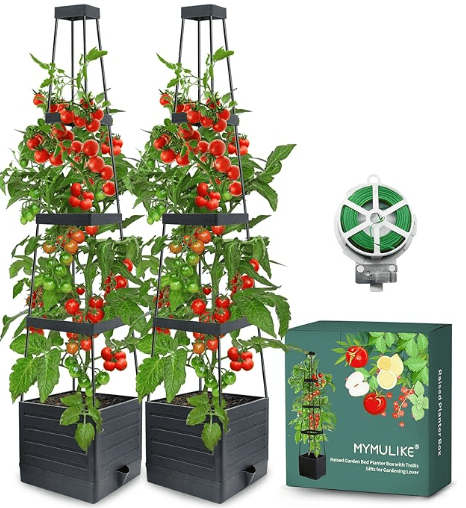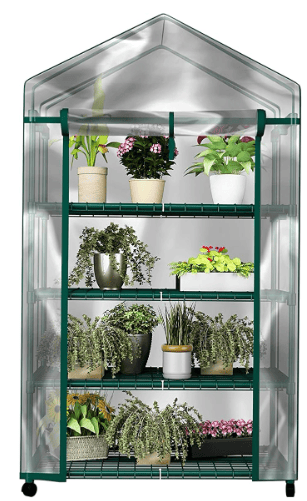Indoor Container Gardening Ideas Anyone Can Start With
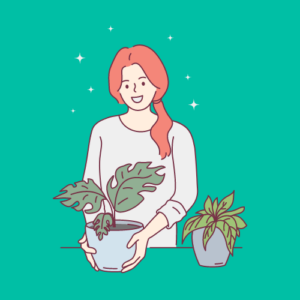
Discover the ultimate guide to indoor container gardening ideas and transform your home into a green sanctuary.
Whether you’re a seasoned gardener or just starting out, these creative and practical ideas will help you grow a variety of plants indoors, regardless of space constraints.
From stylish planters to innovative space-saving solutions, our comprehensive list offers something for everyone. Dive into the world of indoor container gardening and learn how to cultivate a lush, vibrant indoor garden with ease.
You Can Grow It!
Chapters
- What Is Indoor Container Gardening
- Top Indoor Container Gardening Systems
- Hydroponic Vegetables in the Living Room
- Dwarf Fruit Trees
- Succulent Display
- Convert Old Wooden Drawers Into Unique Plant Containers
- Herbs Spiral
- Floating Shelves
- Plant Frames
- Grow-Through Pots
- Mosaic Planters
- Grow Dwarf Tomatoes and Peppers in the Living Room
- Create a Table Centerpiece
What Is Indoor Container Gardening
Indoor container gardening involves growing plants in containers within your home. This method allows you to cultivate a variety of plants, including herbs, fruits, vegetables, flowers, and small trees, regardless of outdoor space. It’s an excellent way to bring greenery indoors, improve air quality, and enjoy gardening year-round. With the right containers, soil, and light, anyone can create a thriving indoor garden.
Let’s explore some amazing Indoor Gardening Ideas Below. But first, let’s check out some cool Indoor Growing Systems to help you grow vegetables, fruits, and herbs indoors.
Top Indoor Container Gardening Systems
Discover the best container systems that make indoor gardening efficient and stylish. From self-watering to automated systems, find the perfect fit for your space and lifestyle below.
Hydroponic Vegetables in the Living Room
Imagine integrating a hydroponic vegetable garden right into your living room, transforming the space into a dynamic area where fresh produce grows alongside your daily life. This setup not only serves as a functional garden but also as a striking interior design element.
- Sleek, Modern Hydroponic Units: Picture a series of elegant, streamlined hydroponic units placed against a living room wall or beside a sunny window. These units are equipped with all the necessary components—nutrient reservoirs, water pumps, and LED grow lights—housed in aesthetically pleasing designs that complement your existing décor.
- Variety of Vegetables: Envision these systems growing a variety of vegetables such as lettuce, spinach, cherry tomatoes, and herbs. The greenery provides a vibrant splash of color, enhancing the ambiance of your living room.
- Integrated Seating Area: Consider a hydroponic garden that doubles as a room divider, with built-in seating. This not only makes it a central feature of your living room but also a place where you can relax or entertain guests, surrounded by the freshness and vitality of growing vegetables.
- Educational and Interactive: The hydroponic setup includes smart technology features that allow you to monitor and control the environment via an app. This technology makes it easy to ensure the plants receive the optimal amount of nutrients and light, making the system suitable even for those new to gardening.
- Ambient Lighting: The LED grow lights are designed to provide not just the necessary light spectrum for plant growth but also to enhance the overall lighting of the room. These lights can be adjusted to change the ambiance of the space, whether you’re hosting a dinner party or enjoying a quiet evening at home.
This living room hydroponic vegetable garden not only brings the joy of gardening indoors but also turns your living space into an eco-friendly, sustainable environment where food is grown just a few steps from where it’s consumed.
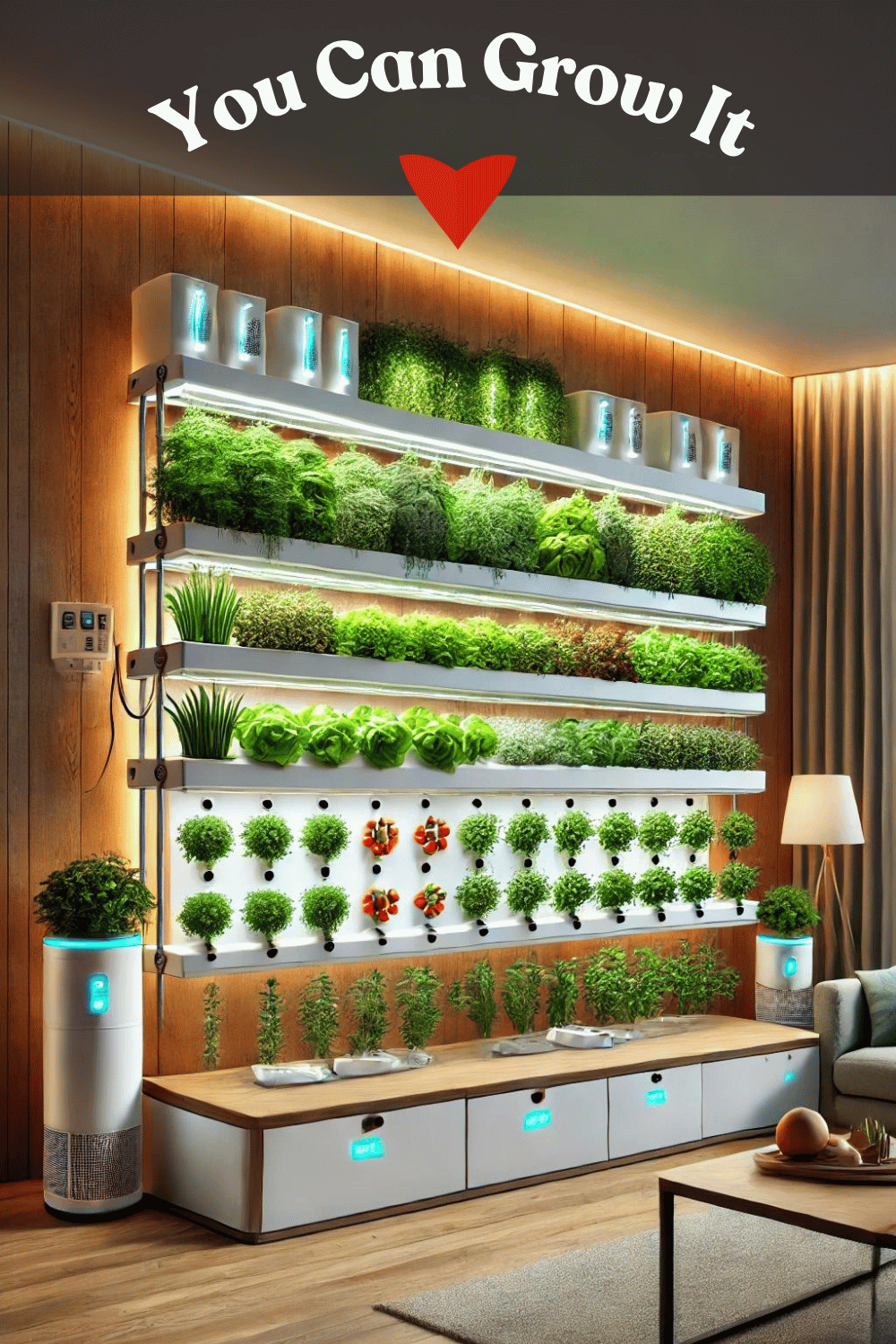
Dwarf Fruit Trees
Imagine bringing a touch of the orchard into your living room with dwarf fruit trees, an elegant and practical way to enjoy fresh fruit while enhancing your indoor decor. Dwarf fruit trees are specially bred to thrive in small spaces and containers, making them perfect for indoor environments where space might be limited.
- Variety and Beauty: Envision a selection of dwarf fruit trees such as lemon, lime, orange, and apple, each offering their unique foliage, blossoms, and fruit. The citrus trees could bear fragrant white flowers followed by bright, sunny fruits, while apple trees might showcase their delicate pink blossoms in spring.
- Strategic Placement: Position these trees near large windows or in a sunroom where they can get plenty of natural light, essential for their growth and fruit production. They can be arranged in decorative pots that complement your living room’s decor, such as sleek modern ceramics or rustic wooden containers.
- Seasonal Decor: The trees themselves become living pieces of decor, changing with the seasons. In the spring, enjoy the beautiful blossoms that fill the room with a sweet fragrance; in the summer and fall, watch as fruits ripen, adding color and interest.
- Practical Benefits: Beyond their aesthetic appeal, having fruit trees indoors can improve air quality and humidity levels. They also offer the joy and satisfaction of harvesting your own fruit, even in an urban setting.
- Underplanting with Companion Plants: To enhance their appearance and optimize container space, underplant the fruit trees with compatible small plants like herbs or flowering annuals. This not only creates a more lush display but also helps maintain soil health and moisture.
This setup not only transforms the living room into a vibrant, green space but also brings a sense of nature and freshness into your home, blending functionality with natural beauty.
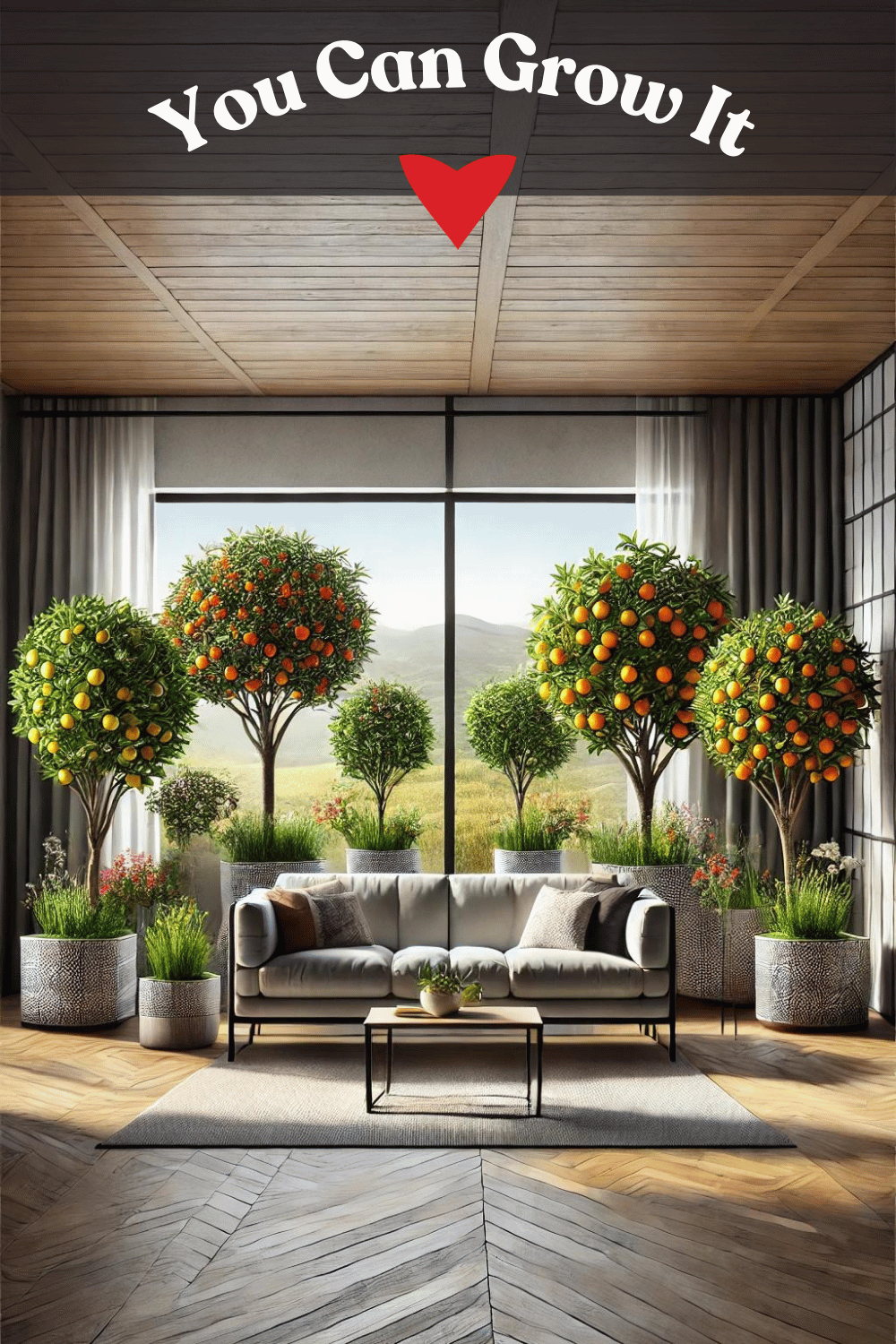
Succulent Display
Imagine creating a stunning succulent display that not only beautifies your space but also serves as a low-maintenance centerpiece in your home or office. This arrangement focuses on the natural beauty and variety of succulents, showcasing their diverse colors, textures, and forms.
- Terraced Succulent Garden: Envision a tiered display stand filled with an assortment of succulents. Each tier can feature different species, such as rosette-forming echeverias, trailing sedums, and sculptural aloes. The varying heights and layers allow each plant to receive adequate light and create a visually appealing gradient effect.
- Wall-Mounted Frames: Picture a series of geometric frames mounted on a wall, each filled with a lush array of succulents. This living wall art can include varieties like haworthias, sempervivums, and cacti, each chosen for their ability to thrive in shallow soil and limited water conditions. The frames can be arranged in a pattern that mimics modern art, turning the wall into a focal point.
- Glass Globe Terrariums: Imagine small, hanging glass globes, each housing a mini succulent garden. These can be suspended at different heights near a window, where the light can enhance their delicate details and colors. Inside the globes, add some natural stones, moss, and sand to create a miniature landscape that captures the essence of a desert.
- Centerpiece Bowl: Consider a large, shallow decorative bowl filled with an intricate arrangement of succulents placed at the center of a dining table or coffee table. Intermix textures and colors, placing spiky blue senecio next to soft, green echeverias and bright, pink kalanchoes to create a dynamic display.
- Succulent Pathway: Create a pathway in a garden or along a balcony with potted succulents lining the walkway. This not only guides visitors through your space but also integrates the succulents into the overall landscaping, making them both decorative and functional.
Each of these succulent display ideas is designed to be both aesthetically pleasing and easy to care for, making them perfect for adding a touch of green to any environment without requiring extensive gardening skills.

Convert Old Wooden Drawers Into Unique Plant Containers
Imagine repurposing old wooden drawers into unique plant containers, transforming discarded furniture pieces into charming and eco-friendly home accents. This project not only recycles materials but also adds a creative and rustic touch to your gardening space, whether indoors or outdoors.
- Preparation and Treatment: Start by selecting wooden drawers of various sizes. Treat them with a waterproof sealant to protect the wood from moisture and decay, extending their life as plant containers. Optionally, you can paint the drawers in bright colors or leave them with their natural, weathered look for a more rustic appeal.
- Soil and Drainage: Add a layer of gravel or small stones at the bottom of each drawer to ensure proper drainage. Fill the drawers with a high-quality potting mix, suitable for the types of plants you wish to grow.
- Plant Selection: Choose plants that complement the size and depth of each drawer. For shallow drawers, succulents, herbs, or annual flowers like pansies and marigolds are ideal. Deeper drawers can accommodate larger plants or even small shrubs. Consider creating a theme for each drawer—such as a culinary herb garden, a succulent display, or a colorful mix of annuals.
- Arrangement and Display: Arrange the drawers at different heights by stacking them or using old furniture pieces like chairs or tables as bases. This creates visual interest and allows each plant to be visible and accessible. Place the drawers in a location that receives appropriate sunlight based on the needs of the plants.
- Accessorizing: Enhance your drawer planters with garden accessories. Small garden tools, decorative stones, and even vintage watering cans can add character to your display. Use plant markers made from popsicle sticks or old spoons for a quaint touch.
- Maintenance: Regularly water and maintain your plants, adjusting based on the specific needs of the varieties you have chosen. Because wooden drawers may not have the longevity of traditional pots, check periodically for signs of wear or decay and treat or replace as needed.
This imaginative use of old wooden drawers as plant containers not only recycles unused items but also brings a unique, creative flair to your home or garden, making it a conversation piece and a testament to sustainable living practices.
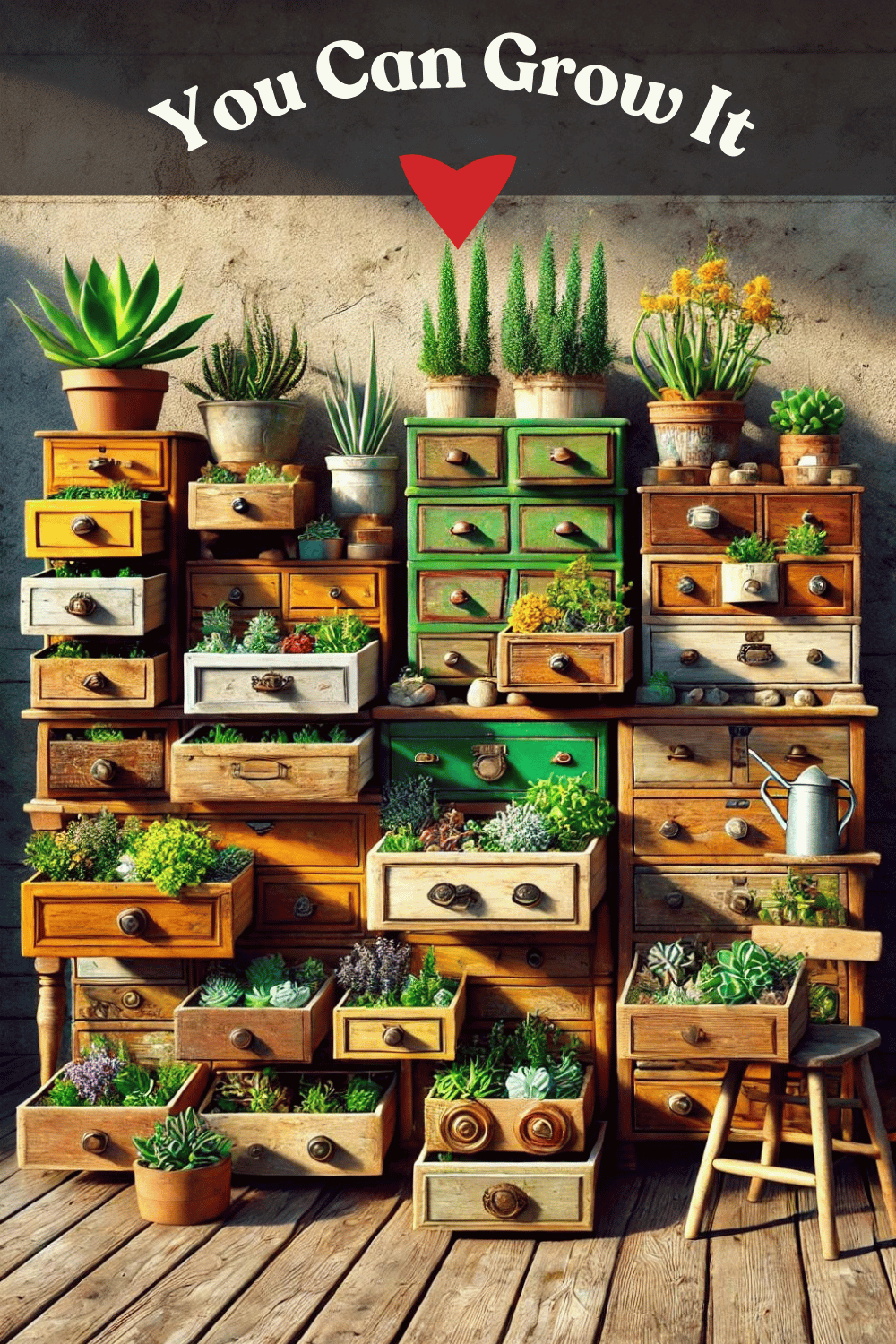
Herbs Spiral
Imagine creating a spiral garden, an innovative and visually striking way to grow herbs vertically, ideal for small gardens, patios, or even balconies. This spiral structure not only saves space but also enhances the aesthetic appeal of your outdoor area, making it a focal point of your gardening efforts.
Design and Structure
The spiral garden is built using natural stones, bricks, or even recycled materials to form a winding spiral that rises from the ground. This design takes advantage of vertical space, allowing you to plant a variety of herbs in a compact footprint. The spiral’s height varies, typically reaching about two to three feet at its highest point, which creates micro-climates along its path suitable for different types of herbs.
Plant Selection
Plant herbs that require similar soil and sunlight conditions but can benefit from the unique micro-climates created by the spiral’s design. For instance, plant sun-loving herbs like rosemary, thyme, and basil near the top where they receive the most sunlight. Moisture-loving herbs such as mint, parsley, and cilantro can be placed lower on the spiral where the soil retains more moisture.
Soil and Drainage
Use a high-quality potting mix that provides excellent drainage yet retains enough moisture for the herbs. Since the spiral design facilitates natural drainage, it is crucial to ensure that water reaches the lower levels adequately without over-saturating the top.
Installation and Location
Choose a location that receives at least six hours of sunlight daily. The base of the spiral can be expanded into a circle, approximately five feet in diameter, ensuring stability and sufficient growing space for each plant. The spiral’s open vertical structure allows air to circulate freely, reducing the risk of fungal diseases commonly associated with dense plantings.
Watering System
Consider installing a drip irrigation system along the spiral to ensure even watering, especially if the top receives more sunlight and dries out faster than the bottom. This system will help maintain consistent moisture levels throughout the garden.
Additional Features
Add stepping stones around or through the spiral garden to enhance accessibility and add to its decorative appeal. You can also place a small fountain or birdbath at the center or base of the spiral to attract pollinators and add another element of visual interest.
This spiral garden not only maximizes your growing area but also turns herb gardening into a sculptural art form, making it both functional and beautiful—a true centerpiece in your outdoor living space.
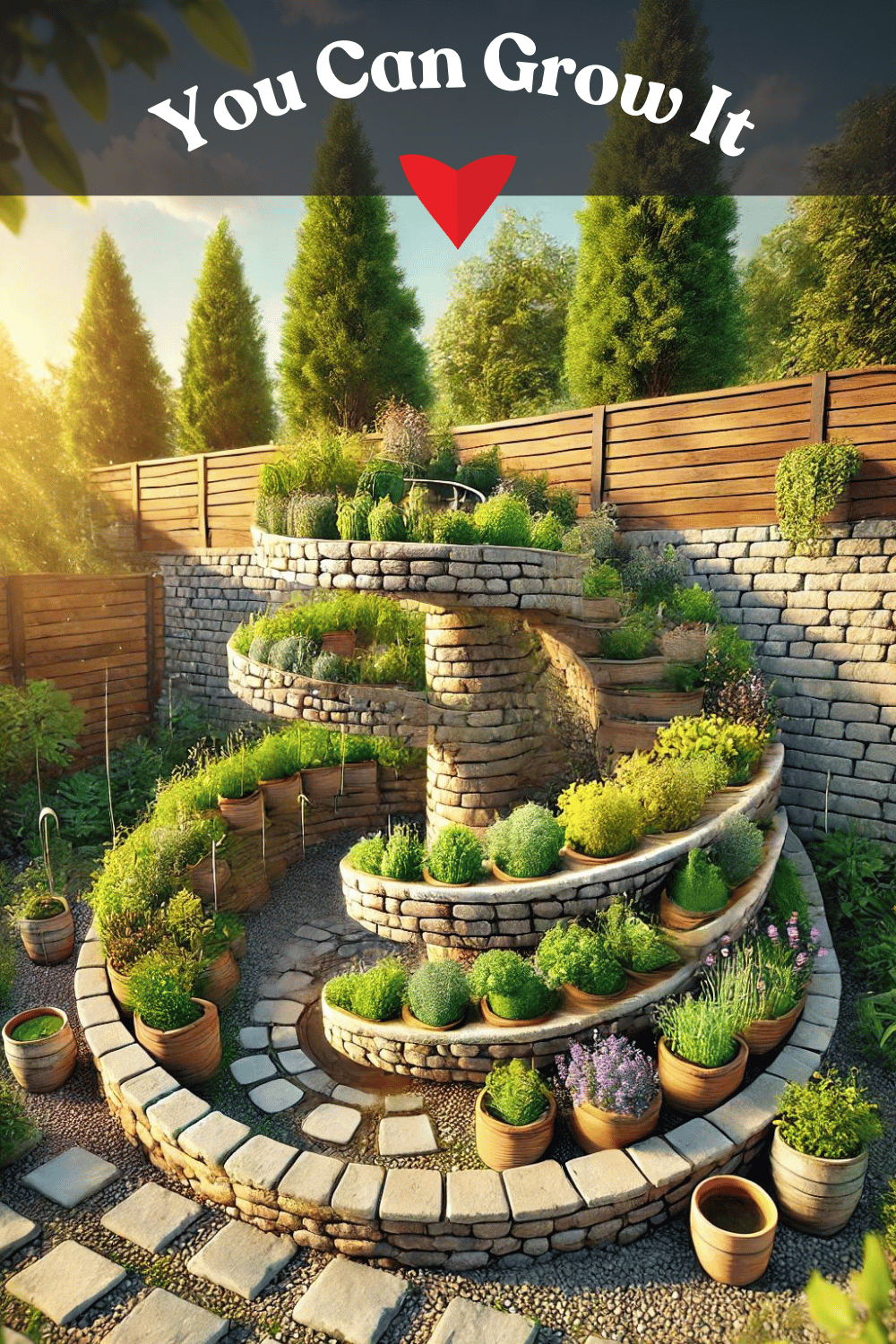
Floating Shelves
Imagine transforming a plain wall in your home into a vibrant indoor garden wall using floating shelves to display a variety of plants. This concept combines both aesthetic appeal and functional use of space, perfect for bringing the outdoors inside and creating a peaceful green oasis.
- Selection of Floating Shelves: Choose sleek, minimalist floating shelves that blend with your room’s décor. The shelves could be made of natural wood for a warm, rustic look or painted in bright or neutral colors to match more contemporary interiors.
- Arrangement of Shelves: Install the shelves at varying heights to create a dynamic and visually interesting display. This staggered arrangement allows each plant to have its moment, ensuring they all receive adequate light and are visible from different parts of the room.
- Plant Selection: Curate a collection of indoor plants that thrive in your home’s lighting conditions. Mix and match different types of plants such as trailing pothos, vibrant ferns, colorful begonias, and small succulents. Consider the water needs and growth

Plant Frames
Imagine transforming a simple picture frame into a lush, framed plant display, using a grid structure to create a living piece of art. This innovative approach not only adds a green touch to your decor but also serves as a focal point in any room, combining the beauty of nature with the elegance of a framed artwork.
Design Concept
- Frame Selection: Choose a large, ornate picture frame or a simple modern one depending on your decor style. The frame can be wooden, metal, or any material that complements your interior.
- Grid Installation: Inside the frame, install a grid made from wire mesh or small wooden slats. This grid will serve as the support structure for the plants, allowing you to tuck roots and ensure they stay in place.
- Plant Selection: Opt for small, air-purifying plants, succulents, or mosses that require minimal soil and are easy to maintain. Plants like air plants (Tillandsia), small ferns, or varieties of Sedum can be ideal as they adapt well to the shallow soil depths and have low watering needs.
- Soil and Moss: For plants that require soil, use a layer of lightweight, moisture-retaining material like sphagnum moss to provide a base. For air plants, no soil is needed; they can be attached directly to the grid.
- Arrangement and Planting: Strategically place the plants within the grid, considering their growth patterns and light requirements. Create a visually appealing arrangement by mixing textures and colors, ensuring that each plant has enough space to grow.
- Maintenance: Equip the frame with a misting system for easy watering or plan a routine for manual misting. Ensure the framed plant display is hung in a location that receives indirect sunlight, which is suitable for most indoor plants.
Additional Features
- Backdrop: If the frame is large and open, consider adding a clear acrylic back to create a closed environment that helps in maintaining humidity, essential for moss and ferns.
- Lighting: Install small LED lights around the frame to highlight the plants and add an extra element of drama to the display, especially in dimmer spaces.
This framed plant display not only brings a piece of living nature into your home but also acts as an eco-friendly piece of art, making it a perfect addition to living rooms, hallways, or even bedrooms. It’s a stylish way to incorporate more greenery into your living space while maintaining an artistic and organized look.
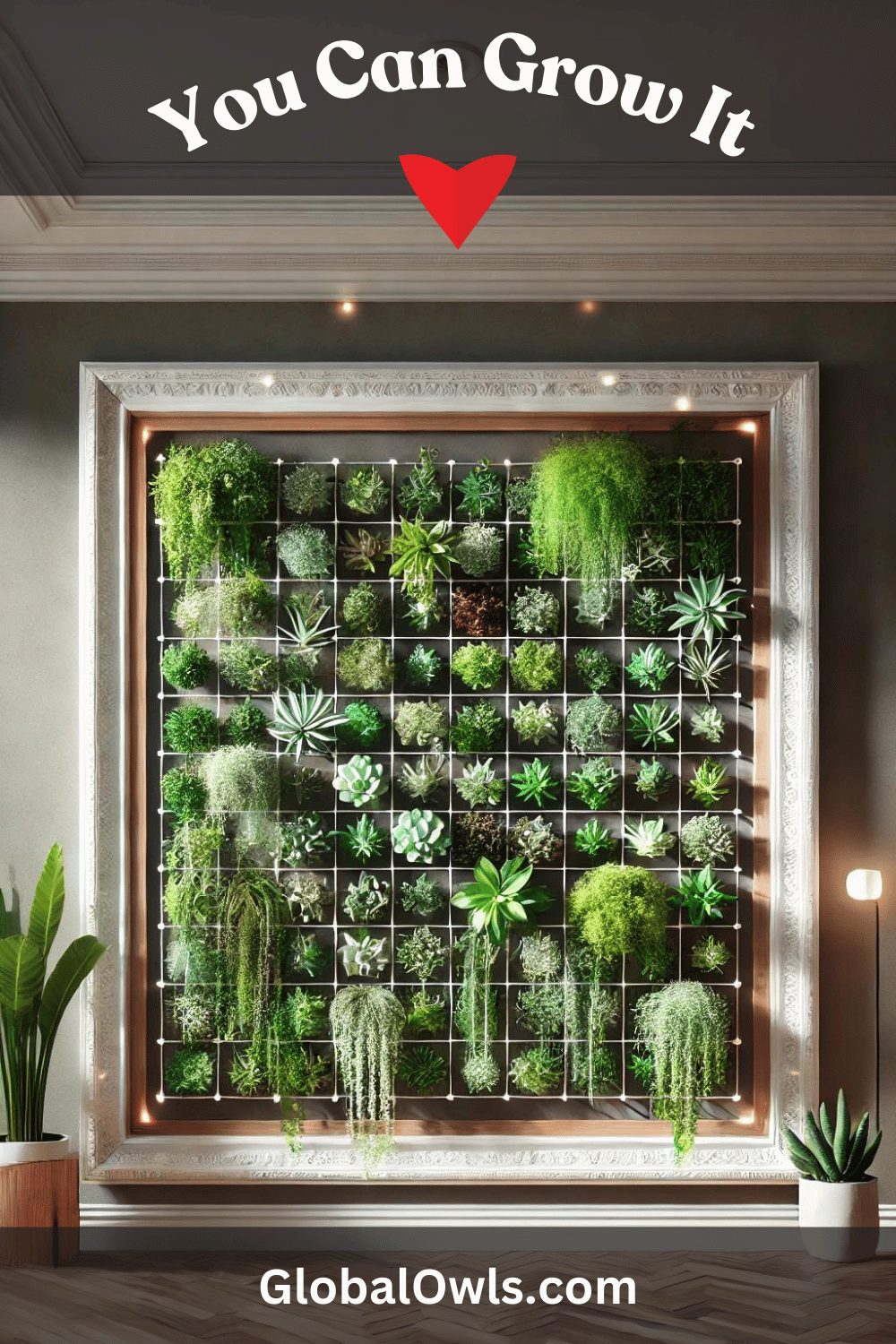
Grow-Through Pots
Imagine using grow-through pots, an innovative gardening concept that utilizes pots with slits or holes designed specifically to allow plants to grow through the sides. This method not only maximizes the visual impact of the plants but also enhances their growth by providing ample air circulation and space to spread. These pots are perfect for both indoor and outdoor settings, bringing a unique and dynamic element to gardening.
Design and Benefits
- Pot Design: These pots are typically made from durable materials like ceramic, plastic, or terracotta, and feature strategically placed slits or holes around the sides. The openings are sized to support plant stems without causing damage, allowing roots to stay contained within the pot while stems and leaves flourish outside.
- Plant Selection: Ideal for plants that naturally send out runners or offset shoots, such as strawberries, certain types of succulents, spider plants, and creeping Jenny. These plants can beautifully cascade and spread through the openings, creating a lush, overflowing effect.
- Soil and Watering: Use a high-quality potting mix that retains moisture yet drains well. Watering needs may be slightly higher as the plant’s foliage increases, but the design of the pot ensures that water reaches the roots effectively.
- Placement: Grow-through pots can be placed on pedestals, plant stands, or directly on the ground, depending on the desired height and visibility. They are particularly striking in areas where the plant’s natural growth patterns can be showcased, such as on patio edges, garden pathways, or in indoor spaces that receive ample light.
- Aesthetic Appeal: The visual appeal of plants growing through and around the pot creates a natural, artistic look. This can be particularly dramatic when multiple pots are grouped together, each with different plants that offer a variety of colors and textures.
- Environmental Benefits: The additional air circulation provided by the slits or holes can help prevent soil disease and root rot, promoting healthier plant growth. Moreover, this method encourages a fuller, more vigorous plant growth as it allows for natural spreading and branching.
Grow-through pots redefine traditional container gardening, offering a creative and effective way to display and nurture plants. They allow gardeners to enjoy the beauty of their plants in a new dimension, adding depth and interest to garden designs or home decor.
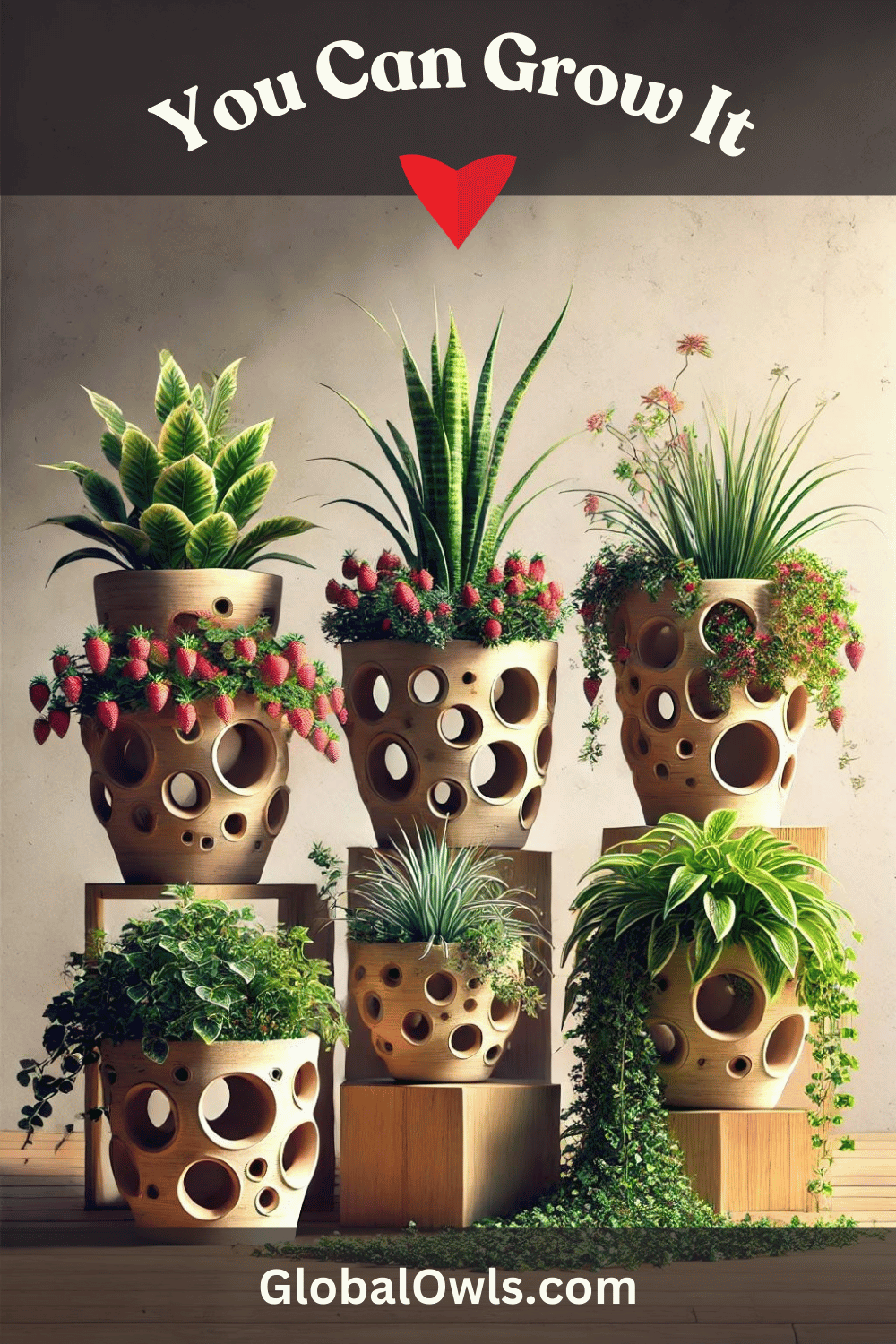
Mosaic Planters
Imagine transforming plain pots into vibrant works of art by decorating them with mosaic tiles. This creative endeavor not only revitalizes your plant containers but also adds a colorful and artistic touch to any indoor or outdoor space.
Design Concept:
- Selection of Pots: Choose various sizes and shapes of plain pots, such as terracotta, ceramic, or plastic, as your canvas. Ensure they are clean and smooth for easy application of the tiles.
- Mosaic Tiles: Gather small pieces of mosaic tiles in different colors and textures. You can use broken pieces of old ceramics, glass tiles, or even pebbles. The variety of colors and materials will add depth and interest to your design.
- Adhesive and Grout: Use a strong adhesive suitable for outdoor conditions to fix the tiles onto the pot. Once the design is set and the adhesive has dried, apply grout to fill in the gaps between the tiles, securing them in place and enhancing the overall durability of the pot.
- Design Patterns: Plan your designs before beginning. You might opt for geometric patterns, abstract designs, or images that mimic natural elements like flowers or landscapes. This creative process allows you to personalize each pot according to your tastes or the setting where the pot will be displayed.
- Finishing Touches: After the grout has dried, seal the mosaic work with a waterproof sealant to protect it from moisture and weather conditions, especially if the pot will be used outdoors.
Usage:
- Indoor Decor: Mosaic planters can brighten up indoor spaces such as living rooms, kitchens, or hallways, adding a burst of color and artistry.
- Outdoor Spaces: They are perfect for patios, balconies, or gardens, where they can complement the natural beauty of the outdoors.
- Gifts: Handmade mosaic pots make unique and personal gifts for friends and family, suitable for any occasion.
This project not only recycles and repurposes old materials but also provides an outlet for artistic expression. The end result is a beautiful, customized planter that enhances the aesthetic appeal of your plants and adds a personal touch to your home or garden décor.
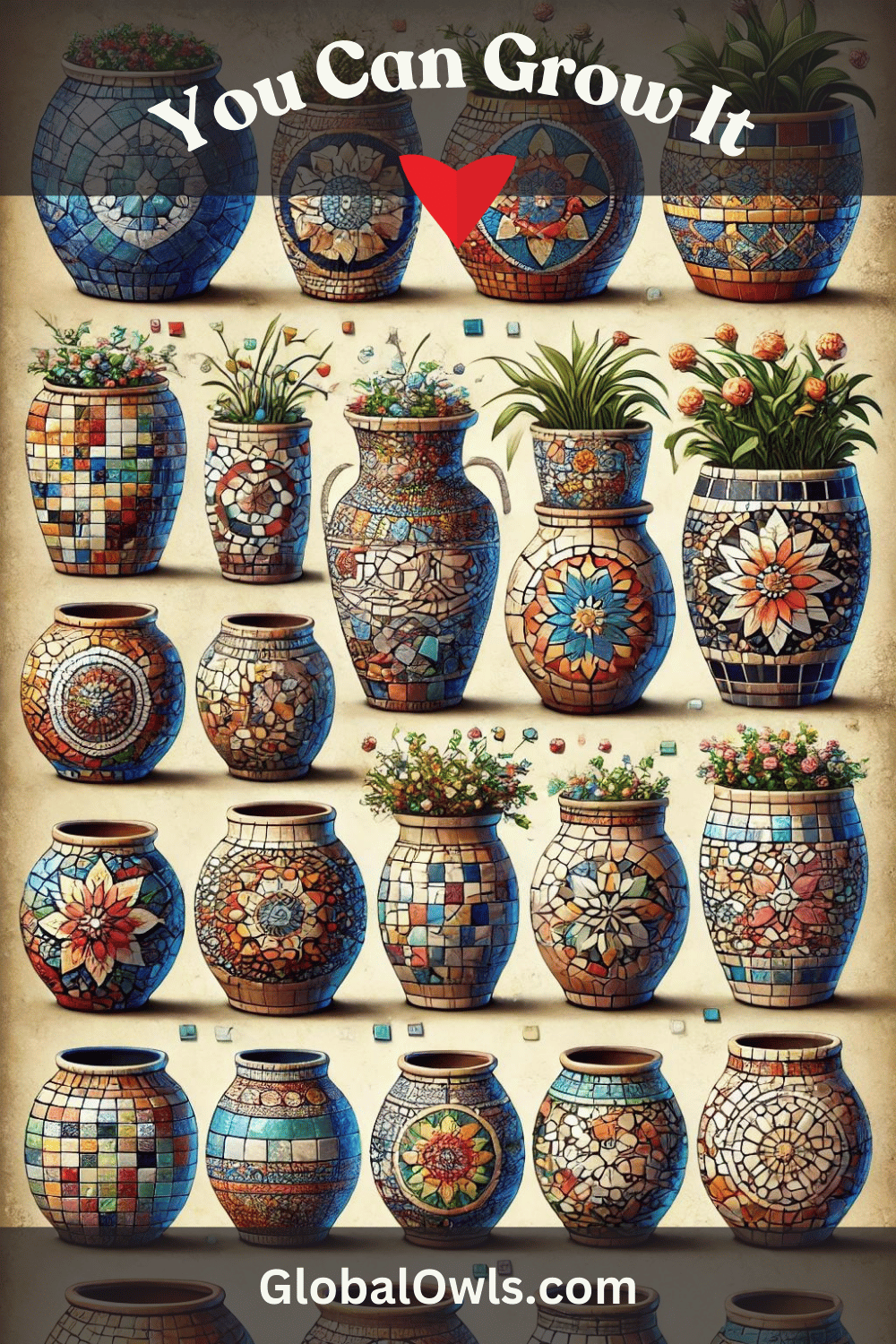
Grow Dwarf Tomatoes and Peppers in the Living Room
Imagine transforming your living room into a vibrant, green space by growing dwarf tomatoes and peppers indoors. This not only adds a splash of natural beauty and color but also provides the satisfaction of growing your own fresh produce right in the comfort of your home.
Setup and Design
- Container Choices: Select appropriate-sized containers that complement your living room decor. These could be stylish ceramic pots, modern plastic planters, or even recycled materials that add an eco-friendly touch. Ensure the pots have good drainage to keep the soil well-aerated and prevent waterlogging.
- Plant Selection: Choose dwarf varieties of tomatoes and peppers that are specifically bred for container gardening. These plants remain compact, making them perfect for indoor spaces without sacrificing their yield. Varieties like ‘Tiny Tim’ tomatoes or ‘Dwarf Bell’ peppers can produce a plentiful harvest in a small footprint.
- Location and Light: Position the containers in areas of the living room that receive ample sunlight, ideally near south-facing windows. If natural light is limited, supplement with grow lights that can provide the necessary spectrum for fruiting. These lights can be integrated into the decor in a way that enhances the aesthetic of your room.
- Soil and Nutrition: Use high-quality potting mix designed for container gardening, rich in organic matter. Feed the plants with a balanced, water-soluble fertilizer every two weeks to ensure they receive all the nutrients they need to grow and produce fruit.
- Climbing Support: Since even dwarf varieties can benefit from support, consider using small stakes or trellises that match the decor. These can help keep the plants upright and healthy, especially as they begin to bear fruit.
Benefits and Enjoyment
- Aesthetic Appeal: The vibrant greens of the leaves and the bright colors of the tomatoes and peppers add a dynamic element to your living room’s ambiance.
- Fresh Produce: Enjoy the taste and nutritional benefits of freshly harvested tomatoes and peppers, free from pesticides and other chemicals.
- Educational Experience: If you have children, this can be a wonderful way to teach them about the growth cycle of plants and the joys of gardening.
- Therapeutic Benefits: Caring for plants has been shown to reduce stress and increase feelings of well-being, making your living room a more relaxing space.
Growing dwarf tomatoes and peppers in your living room not only makes your living space more lively and beautiful but also turns it into a functional area where you can enjoy gardening and harvesting your own produce year-round.

Create a Table Centerpiece
Imagine crafting a stunning plant arrangement as a centerpiece for your dining or coffee table, transforming an everyday space into a showcase of natural beauty. This centerpiece not only serves as an eye-catching decorative element but also brings a touch of tranquility and freshness to your indoor environment.
Design Concept
- Container Selection: Choose an elegant, low-profile container that complements the style of your table and room. This could be a sleek ceramic bowl, a rustic wooden box, or a modern glass terrarium, depending on your decor.
- Plant Selection: Select plants that thrive in indoor conditions and complement each other in height, texture, and color. A combination of foliage and flowering plants like small ferns, peace lilies, and African violets can create a lush, multi-dimensional display. Adding elements like moss or small succulents can fill in gaps and add texture.
- Arrangement Style: Arrange the plants to create a balanced look, considering how they will grow and spread. Place taller plants in the center for height, surrounded by shorter plants, and trailing varieties like ivy or string of pearls draping over the edges for a cascading effect.
- Enhancements: Integrate decorative elements such as polished stones, driftwood, or decorative moss to add depth and interest to the arrangement. These can help cover any visible soil and contribute to a cohesive and stylish appearance.
- Maintenance: Ensure the plants receive adequate light and water according to their specific needs. A central location on a table often benefits from consistent light, but be mindful of the watering requirements, especially if using a non-draining container.
Benefits
- Aesthetic Appeal: A well-designed plant centerpiece is visually appealing and can serve as a focal point in your dining or living area, enhancing the overall ambiance.
- Air Quality Improvement: Indoor plants can help improve air quality by filtering out common pollutants and releasing oxygen.
- Psychological Benefits: The presence of plants in living spaces has been shown to reduce stress, increase creativity, and promote a feeling of well-being.
This plant arrangement as a centerpiece not only beautifies your space but also provides health and wellness benefits, making it a functional and attractive addition to your home.

Conclusion
Indoor container gardening is a versatile and rewarding way to bring nature into your home. With these creative ideas, you can easily grow herbs, succulents, flowers, and even small trees, all while enhancing your living space.
Whether you choose hanging planters, vertical gardens, or repurposed containers, the possibilities are endless. Start your indoor gardening journey today and enjoy the beauty and benefits of a thriving green oasis right in your home.
Happy gardening.
You Can Grow It!
